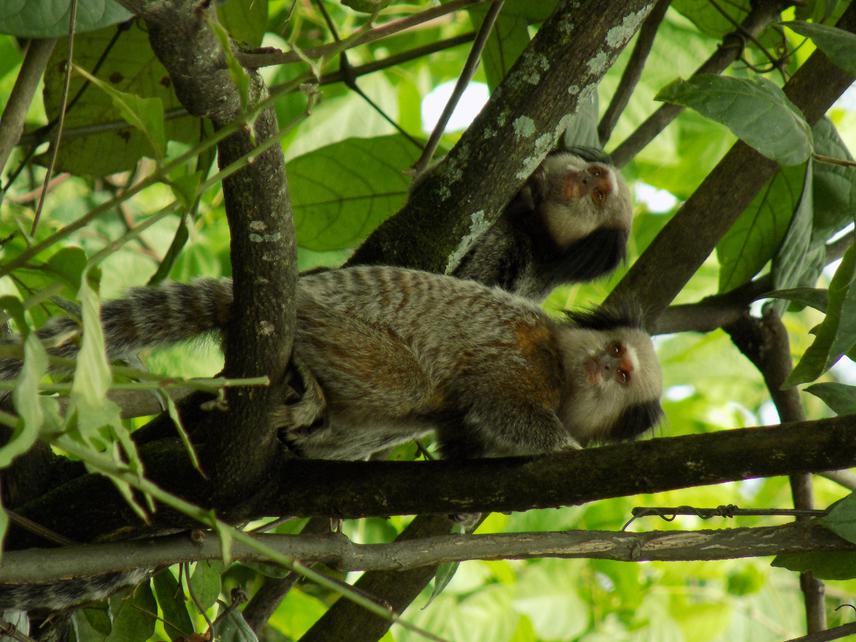Julia Simões Damo
My project aims to evaluate which forest fragments and silviculture areas can function as a source of individuals of the alien Callithrix species, C. penicillata and C. geoffroyi, for the Rio Doce State Park. With this information, I intend to detect the areas of the park most vulnerable to invasion and to elaborate a management plan for these exotic species for the park's buffer zone, with the objective of assisting in the conservation of Callithrix aurita, currently considered one of the 25 most endangered primates in the world.

Hybrids of C. penicillata and C. geoffroyi. © Natasha Grosch Loureiro.
One of the main threats to biodiversity is the introduction of alien species. Some species, when introduced outside their natural habitat, can have negative impacts on the environment and on the native biodiversity, being considered an invasive species. This is the case for species of the genus Callithrix, such as C. penicillata and C. geoffroyi, which, when introduced into areas outside their original distribution, threaten the long-term persistence of native species, especially species of the same genus or family. Callithrix aurita is one of the species threatened by the introduction of these alien species and is currently considered one of the 25 most threatened primate species in the world. This threat occurs due to competition for resources and hybridization, which can result in the extinction of C. aurita due to genetic dilution.
Currently, a large part of the protected areas is inserted in a highly fragmented landscape, which is composed of different types of anthropic matrix. This is the case of the Rio Doce State Park, which is surrounded by remnants of native forest, silviculture areas, urban areas and areas of agriculture and pasture. This protected area is one of the few places where C. aurita still occurs. Thus, future actions for the conservation of this species must involve the management of these invasive species and the prevention of the recolonization of the park by individuals of these alien species. For this, the region in which the protected area is inserted must be taken into account when drawing up a management plan for the conservation of C. aurita.
Therefore, the project aims to evaluate the hypothesis of forest fragments as a source of individuals, considering the dispersal capacity of the species and to draw up a complementary management plan for the region surrounding the Park, contributing to Callithrix aurita conservation.
Header: Hybrid of C. aurita and C. penicillata. © Natasha Grosch Loureiro.